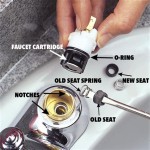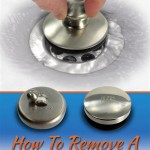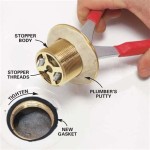Best Cleaners for Bathtub Grout Stains
Bathtub grout, the porous material filling the spaces between tiles, is notoriously susceptible to staining. Regular exposure to moisture, soap scum, minerals from hard water, and mildew creates an ideal breeding ground for discoloration. Over time, these factors can lead to unsightly stains that detract from the overall cleanliness and aesthetic appeal of the bathroom. Selecting the best cleaner for bathtub grout stains requires consideration of the stain's severity, the type of grout, and the user's preference for cleaning methods. This article explores various cleaning agents and techniques effective in removing bathtub grout stains, providing information to facilitate informed decisions regarding grout cleaning.
The composition of grout plays a significant role in its vulnerability to staining. Cementitious grout, the most common type, is naturally porous and readily absorbs liquids and contaminants. Epoxy grout, on the other hand, is a non-porous, resin-based option that offers greater resistance to staining and water damage. While epoxy grout is more durable and requires less frequent cleaning, it is often more expensive and may not be suitable for all tile installations. Understanding the type of grout present in the bathtub area is crucial for selecting appropriate cleaning products and methods.
Before applying any cleaning solution, it is recommended to test it on an inconspicuous area of the grout to ensure it does not damage or discolor the material. Adequate ventilation is also important when working with cleaning products, as some may release fumes that can be irritating or harmful. Furthermore, protective gear such as gloves and eye protection should be worn to prevent skin and eye irritation.
Identifying the Type of Grout Stain
Before choosing a cleaning solution, it is essential to identify the type of stain affecting the grout. Common bathtub grout stains include mildew, soap scum, hard water deposits, and rust. Mildew stains typically appear as black or dark green spots and are caused by fungal growth thriving in humid environments. Soap scum is a white or grayish film resulting from the combination of soap and hard water minerals. Hard water deposits manifest as white or chalky residues, primarily composed of calcium and magnesium. Rust stains, characterized by their reddish-brown color, are often caused by the presence of iron in the water supply or from rusty fixtures in proximity to the grout.
Differentiating between these types of stains allows for the selection of cleaning agents specifically formulated to target the specific contaminant. For instance, mildew-specific cleaners often contain bleach or other antimicrobial agents, while soap scum removers are typically acidic and designed to dissolve mineral deposits. Choosing a targeted cleaning approach maximizes the effectiveness of the cleaning process and minimizes the risk of damaging the grout.
In some instances, grout may appear discolored due to embedded dirt and grime rather than a specific stain. In such cases, a general-purpose cleaner or a scrub brush may be sufficient to restore the grout's original color. Regular cleaning practices can prevent the buildup of dirt and grime, reducing the likelihood of more severe staining over time.
Effective Cleaning Solutions and Methods
A variety of cleaning solutions and methods are available for removing bathtub grout stains, ranging from household ingredients to commercially produced cleaners. The efficacy of each solution depends on the type and severity of the stain, as well as the type of grout. The following sections detail several effective cleaning options and their respective application techniques.
Baking Soda and Vinegar: A common household solution involves creating a paste of baking soda and water, applying it to the stained grout, and then spraying it with white vinegar. The combination of baking soda and vinegar creates a fizzing reaction that helps to loosen dirt and grime. After allowing the mixture to sit for several minutes, scrub the grout with a stiff-bristled brush and rinse thoroughly with water. This method is particularly effective for removing mild stains and soap scum.
Bleach: Bleach, either in liquid or gel form, is a potent disinfectant and stain remover, particularly effective for addressing mildew stains. However, caution must be exercised when using bleach, as it can discolor grout and release harmful fumes. To use bleach effectively, apply a diluted solution (e.g., 1 part bleach to 10 parts water) to the stained grout, allow it to sit for a short period (5-10 minutes), and then scrub with a brush and rinse thoroughly. Proper ventilation is essential when using bleach, and it should not be mixed with ammonia or other cleaning products.
Hydrogen Peroxide: Hydrogen peroxide is a gentler alternative to bleach, effective for removing stains and disinfecting grout. It can be applied directly to the stained grout, allowed to sit for several minutes, and then scrubbed with a brush and rinsed with water. Hydrogen peroxide is less likely to discolor grout than bleach, but it may not be as effective for removing stubborn stains.
Commercial Grout Cleaners: A wide range of commercial grout cleaners are available on the market, specifically formulated to remove various types of stains. These cleaners often contain a blend of surfactants, solvents, and acids designed to penetrate and dissolve stains. When selecting a commercial grout cleaner, it is important to read the product label carefully and follow the manufacturer's instructions. Some commercial cleaners may contain harsh chemicals that can damage grout or release harmful fumes, so it is important to choose a product that is appropriate for the type of grout and stain.
Steam Cleaning: Steam cleaners use high-temperature steam to loosen dirt and grime from grout without the need for chemicals. The steam penetrates the porous surface of the grout, effectively removing stains and killing mildew. Steam cleaning is a safe and environmentally friendly option, but it may not be as effective for removing stubborn stains as some chemical cleaners. An upholstery attachment with a brush may be used to concentrate the steam to the grout lines.
Preventative Measures to Minimize Grout Staining
Preventing bathtub grout stains is often easier and more effective than attempting to remove them after they have formed. Implementing proactive measures can significantly reduce the frequency and severity of grout staining, preserving the appearance and longevity of the bathroom tiles.
Regular Cleaning: Routine cleaning of the bathtub area is essential for preventing the buildup of soap scum, mildew, and other contaminants. Wiping down the tiles and grout after each use with a squeegee or towel helps to remove excess moisture and prevent the growth of mildew. A mild cleaning solution, such as a mixture of water and dish soap, can be used to clean the grout on a weekly basis. Allowing the cleaning solution to sit for a few minutes before rinsing improves effectiveness.
Proper Ventilation: Adequate ventilation is crucial for reducing humidity in the bathroom, which is a key factor in mildew growth. Running the exhaust fan during and after showers or baths helps to remove excess moisture from the air. Opening a window can also improve ventilation, but it is important to ensure that the window is properly sealed to prevent drafts and water damage.
Sealing Grout: Applying a grout sealer creates a protective barrier that prevents water and contaminants from penetrating the grout's porous surface. Grout sealers are available in various formulations, including penetrating sealers and surface sealers. Penetrating sealers soak into the grout and create a water-resistant barrier from within, while surface sealers form a protective film on the grout surface. It is important to choose a grout sealer that is compatible with the type of grout and follow the manufacturer's instructions for application. The frequency of reapplying the sealer will depend on the specific product and the level of usage, but generally, it is recommended to reapply grout sealer every 1-2 years.
Using a Squeegee: Keeping a squeegee in the shower and using it after each use can significantly reduce the amount of water and soap scum that accumulates on the tiles and grout. Squeegeeing the surfaces removes excess moisture, inhibiting the growth of mildew and preventing the formation of soap scum deposits. This simple habit can greatly reduce the need for more intensive cleaning efforts.
Choosing the Right Cleaning Products: Selecting cleaning products specifically designed for use in the bathroom and avoiding harsh chemicals that can damage grout is essential. Avoid using abrasive cleaners, as they can scratch the tile and grout surfaces, making them more susceptible to staining. Opt for non-abrasive cleaners formulated to remove soap scum, mildew, and hard water deposits without damaging the grout.
By consistently implementing these preventative measures, the accumulation of stains on bathtub grout can be significantly reduced, minimizing the need for intensive cleaning and preserving the aesthetic appeal of the bathroom for an extended period.

How To Clean Bathroom Tile And Grout Reviews By Wirecutter

10 Best Shower Cleaners Of 2025 Reviewed

11 Best Shower Cleaners Tested Reviewed Nbc Select

How To Clean Grout On Floor Tiles Showers Oxiclean

How To Clean A Bathtub And Sink Reviews By Wirecutter

Clearance Mold Stain Remover Gel Cleaner Heavy Duty For Front Loader Washing Machine Seal Bathroom Grout Shower Caulk Best Home

11 Best Shower Cleaners Tested Reviewed Nbc Select

Bathroom Spray Cleaner For Shower Tub And Tile Oxiclean

Clearance Mold Stain Remover Gel Cleaner Heavy Duty For Front Loader Washing Machine Seal Bathroom Grout Shower Caulk Best Home

How To Clean A Bathtub And Sink Reviews By Wirecutter
Related Posts








